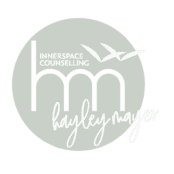The Identity Puzzle: Piecing Together Your True Self
Have you ever felt like you have lost your way? Are you out of alignment, and do you have no idea who you are anymore? It is bound to happen to us at some point in our lives. It can be after a baby, a death, a breakup, or a career change; it does not even have to be a life-changing event; sometimes, we wake up and wonder what it is all for. Our mind, body, and spirit are out of alignment, and we can lose confidence and direction. So, when this happens, we look to find ourselves or create ourselves because we are not obliged to be the people we were five minutes ago, let alone a lifetime ago.
When we are in a slump and have lost our way, we often feel a low vibration and negative thoughts. We think we are not enough. Have you ever been there? I am sure every human has had that moment. Then the feedback loop starts. We feel we are not sufficient, and then we become not enough.
We can only live up to the person we think we are. If you feel not enough or lazy or whatever title you give yourself, your actions will automatically follow. Remember my favorite saying, “Watch the words you tell yourself because your words create your thoughts, your thoughts create your feelings, your feelings create your actions, your actions create your behavior, your behavior creates your habits, and your habits create your destiny.”
The reason is the brain needs to be correct, and if it has incongruent messages, it can’t deal with them. For instance, if I say I am a lazy person and then sit on the couch and watch Netflix all day, that is a congruent message that my brain is receiving, and I can continue doing that for decades.
However, if I want to shift my identity, I tell myself I am a runner, sit on the couch, and watch Netflix; my brain does not like mixed messages, and I will be pulled to put on my runners and go for a run.
James Clear, who wrote Atomic Habits, gives a good example. He says if someone has stopped smoking and someone offers them a cigarette, there are two responses. The first person says, “No, thank you, I am trying to quit,” however, the other person says, “No, thank you, I don’t smoke.” The first person is more likely to start smoking again because they have not shifted their identity, yet the second person is more likely not to smoke because they do not think of themselves as a smoker.
It is imperative to identify as the person we want to become. So here are ten tips on how to shift your identity.
1. The Exploration Begins:
As we know now, Self-identity is a dynamic concept that encompasses our beliefs, values, interests, and roles in various aspects of our lives. Begin your exploration by asking: What values are most important to you? What are your passions, dreams, and aspirations? Get an idea of that highest version of yourself and what that person looks like, acts, dresses, and eats. What energy does that person have, and so on? Get a clear vision of it in your mind’s eye. We must see the target to hit the target.
2. Embracing Change:
Recognize that Self-identity is not static; it evolves. Embrace the changes that come with personal growth and life experiences. Each chapter of your life contributes to the narrative of who you are becoming.
I laugh when people say they are going to change. Of course, we will change; life is constantly in flux. We do not have control of that. So, we either sit in the passenger seat and let life take us where it will, or we become conscious about the change we want. One that is aligned with our soul’s calling.
3. Unmasking Labels:
Challenge societal labels and expectations that may influence your self-perception. Authentic self-identity often involves breaking free from predefined roles and discovering the unique qualities that set you apart.
The quicker we become who we are and celebrate it instead of trying to fit in, the more aligned we become. For instance, I had a friend at school who hated her freckles and would do anything to eliminate them. Yet, as she grew into herself and began to embrace them, that was the exact feature that made her stand out from the crowd and made her uniquely beautiful. Our quirks and imperfections are our value; if we try to fix it to fit in, we lose our allure.
Cultivate Self-Awareness:
Self-awareness is the cornerstone of understanding your identity. Reflect on your thoughts, emotions, and behaviors. Journaling, meditation, and mindfulness practices can help deepen your self-awareness.
Like a GPS, we need to know where we are before we can input where we are going. This gives us a sense of our strengths and limitations, what ignites our passions, and what saps our energy. No conscious change can happen without self-awareness.
Embrace Diversity:
Celebrate the diversity within yourself. You are a mosaic of experiences, cultures, and influences. Embracing your diverse background contributes to a richer, more authentic sense of self.
Navigating Challenges:
Self-identity often faces challenges from societal expectations, external judgments, or internal conflicts. Develop resilience by acknowledging and addressing these challenges, fostering a stronger sense of self.
Sometimes, shifting our identity can be difficult because we become attached to the person we know us to be. We fall into habitual ways and fear other people will leave us because of our changes, and we do not behave like we used to.
That is ok; there might be some resistance from your nearest and dearest. Sometimes, we may need to let go of some friendships. For example, if a good friend of yours is constantly engaged in heavy drinking and partying and you have gone on a holistic health renewal, maybe your common ground will fall away and, as such, your friendship.
Recognize and grieve the loss, but remember that something must die for something to be reborn. It reminds me of that saying, “Everyone wants to go to heaven, but no one wants to die.”
Defining Success on Your Terms:
Challenge conventional notions of success and define them on your terms. What brings you fulfillment and joy? Your self-identity is closely tied to pursuing a path that aligns with your values and aspirations. Some people will think you have lost your mind by quitting your corporate position to start your own business. However, the idea was given to you, and if other people do not understand it, it is because the calling was not given to them but to you.
Building Healthy Relationships:
Nurturing healthy relationships requires a solid understanding of your own identity. When you know who you are, you can communicate your needs, boundaries, and expectations more effectively, leading to more fulfilling connections.
Remember, the most important relationship is the one you have with yourself. You are unshakable if you have a knowing. A ‘knowing’ looks like this. Would you be offended if I told you that you have green hair? No, of course not, because you know without a doubt in your mind that you do not have green hair. However, if I said you are not good enough, you will feel anxious or angry because you do not believe in yourself that you are good enough. We need to know our worth from the inside, not the outside. As Elanor Roosevelt said, “No one can make you feel anything without your permission.”
Self-Expression:
Explore various forms of self-expression, whether through art, writing, fashion, or other creative outlets. Expressing yourself authentically fosters a deeper connection with your identity and allows you to share your uniqueness with the world.
Embracing Uniqueness:
Celebrate the quirks, imperfections, and idiosyncrasies that make you uniquely you. Embracing your individuality is a powerful act of self-love and acceptance.
Remember, your self-identity is a lifelong journey, and there’s beauty in the ongoing exploration. Take the time to know yourself, honor your trip, and embrace the incredible person you are becoming. There is no sweeter feeling than bridging the gap between where you are and where you want to be.
Here’s to the adventure of self-discovery!
As always, remember to be kind to yourself and kind to others.





